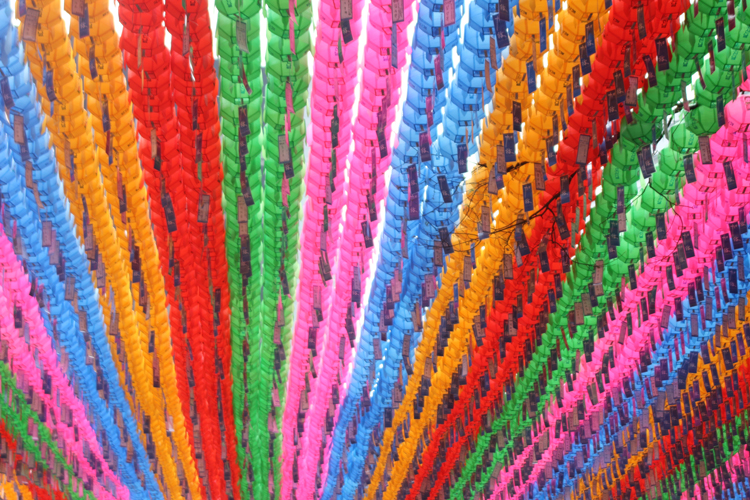
A Lotus Lantern Floating Through Seoul
The Lotus Lantern Festival is an annual event that has been held since 1,000 years ago and became an inherent part of Korean culture. The festivities last for about two weeks and consist of different events to honor Buddhism and the birthday of Buddha. The Yeondeung”, which translates into “lantern lightning”, is an important ritual in Buddhism, whereas the light of the lanterns symbolizes the light that wisdom brings to the world. However, in recent days the festival focuses on fostering mutual understanding and healthy relationships between Buddhist and followers of other religions as well as the dialogue between locals and international visitors.
To ring in the festival, monks and spectators gather for the first time to hold the “Jeomdeungsik”, the Lantern
Lightning Ceremony, in which a grand lantern is being lit. Following the opening ceremony, traditional lanterns in
various colors and shapes are being exhibited at various temples and alongside the Cheonggyecheon stream until
the end of the festivities. These lanterns are traditionally made from Hanji, Korean traditional paper, and the motives are inspired by traditional fairy tales, symbols of Buddhism, animals, nature or buildings of importance for
Buddhism such as temples and pagodas.
About ten days into the festival, the actual Lotus Lantern parade with thousands of specially made lanterns in being
held in the heart of Seoul. On this day, Jogyesa temple is holding different kinds of cultural events such as the
making of lotus lanterns, distribution of traditional temple food and free classes about Buddhism and Korean
traditions. I actually participated in some of the events, which proved to be quite fun and interesting even for
non-Buddhists.
The lotus lantern parade is being held in the evening and lasts for about two hours. Usually accompanied by
traditional Korean music, this years’ Lotus Lantern Festival went with Buddhistic chants and prayers by the lantern
beares instead, hoping for the victims of the Sewol ferry accident to go to Nirvana and the safe return of the missing
ones.
Personally, the sight of elementary, middle and high school students folding their hands to pray for the deceased
made my heart ache again – two weeks after the ferry sank, the pain of the nation was all to visible in this event. The
tragedy of the events combined with the beauty of the lanterns was bitter sweet and proved to be a great opportunity
to look back at the events once more. However, when spectators with lanterns were asked to join the parade, the
mood good a little brighter and stayed like this all the way until the end of the festival, when the last lantern bearers
finally reached Jogyesa temple. Maybe this description of the events sounds a little depressing, but the Lotus Lantern
parade was actually quite beautiful and amazing. Walking on Jogno street – completely blocked for cars – towards
Jonggak Intersection with the night city background of Seoul was definitely an unique and memorial experience.
The Yeondeung festivities do not end at this point yet. In fact, the festivities continue for about one more week from
now on with the display of the lanterns at Cheonggye-cheon until May 6th. If you find the time, you should definitely
go and see the lanterns by yourself. As for the Lotus Lantern parade, even though the atmosphere did not allow for big
cheerful celebration, the festival was still interesting and impressive. Probably next year’s festival will be brighter
and full of joy so I recommend you joining in. It was definitely a great experience, overall.
